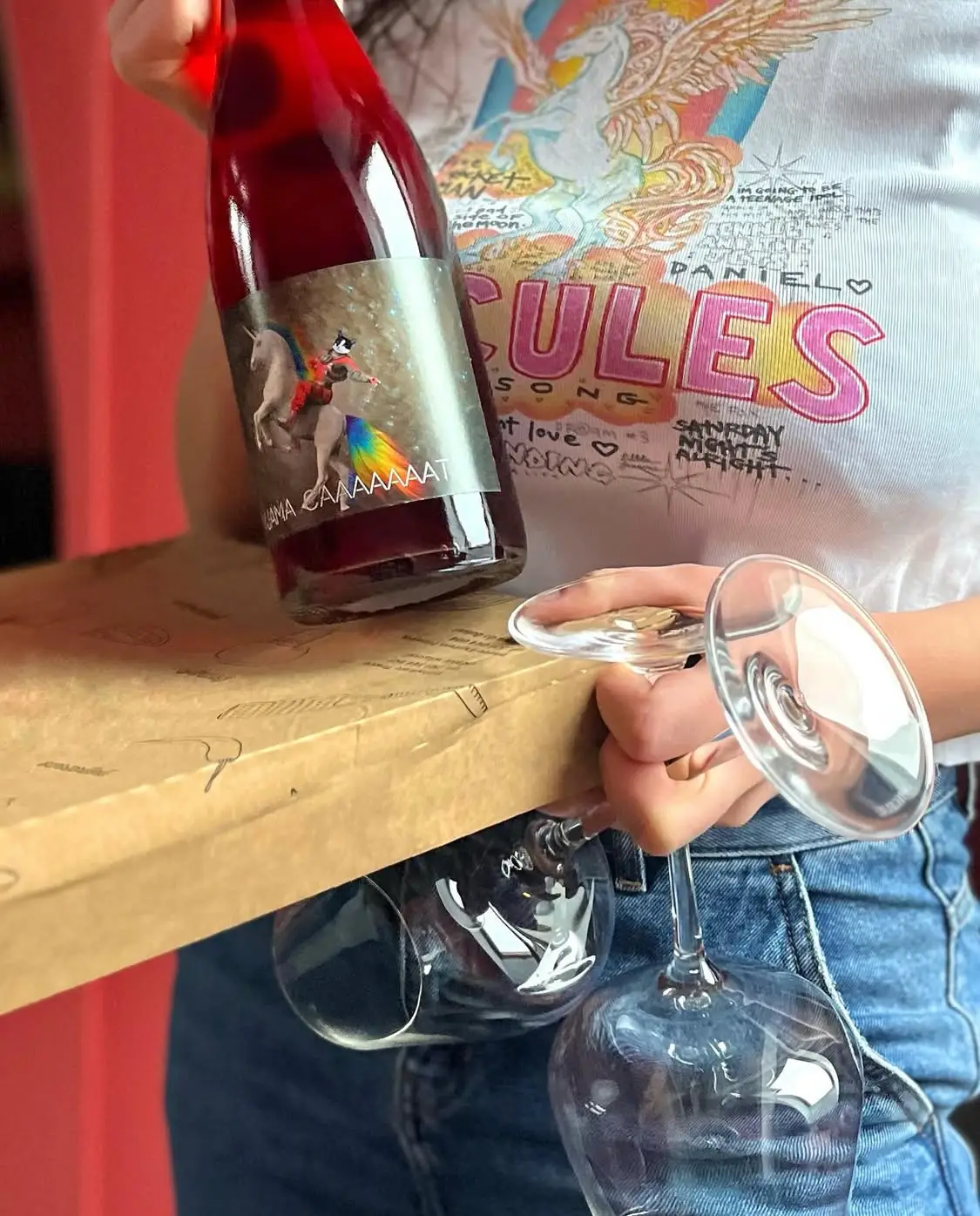Your cart is empty!
In the world of wine, one trend has been bubbling up over the past few years: natural sparkling wines, often called Pét-Nat, Pet Nat, Pet’ Nat’, or pét-nat.
This sparkling wine, combining lightness, simplicity, and pure pleasure, has established itself as a refreshing alternative to classic Champagne, Crémant, and Prosecco.
Let’s dive into what makes this craze so powerful.
Why is a Pét Nat ?
A Pétillant Naturel (natural sparkling wine) is produced using the ancestral method: the wine is bottled before the end of fermentation, allowing carbon dioxide to form naturally in the bottle and create a gentle, spontaneous fizz.
The ancestral method actually predates Champagne’s “traditional method.” It dates back to the 16th century and first appeared in Limoux (Languedoc, South of France). The earliest written record of it dates to 1531, in the archives of the Benedictine abbey of Saint-Hilaire, where monks produced a naturally sparkling wine long before Champagne was invented. This ancient practice then spread to other regions such as Gaillac (France’s South West) and Die (Rhône Valley), where it became a true winemaking tradition.
In practice, a Pét-Nat can be white, rosé, or red. It’s usually unfiltered and not disgorged, meaning a bit of natural sediment may remain; a part of the wine’s charm.
This style captures the terroir in its most immediate and refreshing form.
Pét-Nats are often sealed with a crown cap (like a beer cap) or a traditional mushroom cork.
Why the craze today ?
Several reasons explain why natural sparkling wines have captured so much attention:
- A desire for authenticity : in an over-technified world, wine brings back truth and craftsmanship. Drinkers seek real wines, grown with care, made with minimal intervention. Pét-Nat embodies that ideal: natural, minimalist, alive.
- A festive and relaxed style : Pét-Nats are usually young, fruity, approachable, with a soft bubble, making it the perfect companion for aperitifs and casual moments.
- An easy-drinking profile: most Pét-Nats are low in alcohol (often under 12.5%, sometimes even below 10%), allowing for longer enjoyment without fatigue.
- A strong visual and identity : playful labels, crown caps, creative packaging… all this appeals to a younger, design-conscious audience drawn by both the freshness of the wine and the freshness of its look!
- The broader “natural wine” movement : riding the wave of organic, biodynamic, and low-intervention wines, Pét-Nat perfectly fits this cultural shift toward less manipulation and more life in the glass.
Keys to quality (and pitfalls to avoid)
Making a good Pét-Nat is no accident. The process looks simple, but it’s technically demanding: timing the bottling perfectly, monitoring residual sugar, managing bottle pressure, and avoiding faults.
Common pitfalls include:
- Too little fizz
- Unstable or faulty wine (oxidation, “mousy” aromas, uncontrolled sediment)
- Inconsistency between bottles, which can confuse newcomers
For drinkers, the key is to trust the producer: precision, discipline, and philosophy make all the difference.
Pét-Nat as a gateway to terroir
Unlike industrial sparkling wines, a Pét-Nat expresses the vineyard’s character with minimal interference: organic farming, healthy soils, natural winemaking, spontaneous fermentation, no dosage, and native yeasts. Each bottle carries the signature of its origin.
For example, Pyjama Caaaaaaat 2023 is a red sparkling wine from the Loire Valley, made from Gamay Saint-Romain (10.5%) grown on granite volcanic slopes.
It shows how a Pét-Nat can be both playful (joyful bubbles) and serious (clear sense of place, method, and style).
In conclusion
Pétillant Naturel goes beyond the trend, it’s a manifesto for unadorned wine, wines that are vibrant and alive.
A sincere bubble, born from a centuries-old method, reminding us that true pleasure lives outside the norm: spontaneous (like our fermentations) and free (like our wines).
Residual sugar in wine
+: Residual sugar in wineWhen we talk about sugar in wine, we are not referring to…
The rise of Pét-Nat wines : power of the fiiiiiiizz
+: The rise of Pét-Nat wines : power of the fiiiiiiizzIn the world of wine, one trend has been bubbling up over…
What dishes pair well with orange wine?
+: What dishes pair well with orange wine?Orange wine pairs beautifully with a wide variety of dishes. But which…
